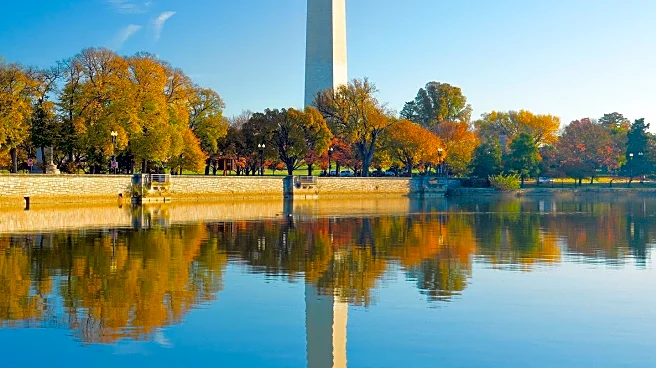What's Happening?
The Washington area is set to experience a week of sunny and cool autumn weather, according to the latest forecast. Monday will see mostly sunny skies with temperatures cooler than the previous day, reaching
highs in the low to mid-60s. Winds from the west are expected to be brisk, with gusts over 25 mph. As the week progresses, temperatures will remain mild, with highs approaching 70 degrees on Tuesday. The period from Wednesday to Saturday will be the chilliest of the season, with highs near 60 degrees and overnight lows in the 30s and 40s. The forecast anticipates little to no rain, with skies generally clear to partly cloudy.
Why It's Important?
This weather pattern is significant for residents and businesses in the Washington area, as it marks a transition into cooler autumn conditions. The sunny and crisp weather is ideal for outdoor activities and may boost local tourism and recreational businesses. Additionally, the lack of rain and clear skies could benefit agricultural activities and outdoor events planned for the week. The cooler temperatures also signal the need for residents to prepare for the upcoming winter season, potentially impacting heating and energy consumption.
What's Next?
As the week progresses, residents can expect continued cool and sunny weather, with temperatures gradually warming by Saturday. The forecast suggests that the region will remain dry, with no significant rain expected. This stable weather pattern allows for planning outdoor activities and events without the concern of weather disruptions. Businesses and local authorities may use this period to prepare for the colder months ahead, ensuring infrastructure and services are ready for winter conditions.
Beyond the Headlines
The shift to cooler autumn weather may have broader implications for energy consumption in the region. As temperatures drop, there may be an increased demand for heating, impacting energy providers and potentially leading to higher utility bills for residents. Additionally, the clear skies and cooler temperatures could influence local wildlife behavior, as animals prepare for the winter months. This transition period is also a reminder of the changing seasons and the need for communities to adapt to varying weather conditions.











